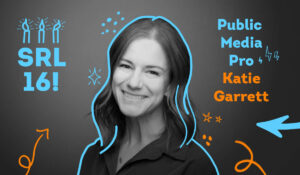SRL 16: “I know what I can do to actually help my students.” Public media professional Katie Garrett on connecting teachers and students to free resources
 Celebrating 16 years of Student Reporting Labs!
Celebrating 16 years of Student Reporting Labs!
PBS News Student Reporting Labs was founded by Leah Clapman in 2009. What started with six pilot schools reporting video stories in their communities has grown to service hundreds of schools and thousands of educators and students across the country. To commemorate our “Sweet Sixteen,” we spoke with five of the original pilot educators and journalists who helped prove the concept and build the foundation of this vibrant community of storytellers.
Katie Garrett is the Associate Media Director for the Utah Education Network (UEN), a broadband and digital broadcast network that connects all Utah school districts to quality educational resources. UEN was one of the first stations to align with SRL’s mission. Katie’s director, Laura Hunter, collaborated with Leah in the early stages of SRL’s development. Katie and the team at UEN have been helping educators get involved and use SRL’s free resources for the last 16 years. UEN provides mini grants for classrooms and stations to get equipment, provides hands-on training, and offers a distribution point for youth-made media through their student-hosted broadcast program Students in Focus.
In this Q&A, Katie Garrett reflects on highlights from her work in education and offers resources for new and seasoned teachers alike.
This Q&A has been lightly edited for clarity.
Why is it important that students have the opportunity to make media and share it with their community?
We always try to encourage authentic learning situations. When we can have students produce media that has a bigger reach, beyond maybe their school social media or school announcements, on our station or on NewsHour, it just feels more real to them. They take the work a little bit more seriously. When we talk to teachers, one thing that they say they struggle with is having the students care about their work. And so we like to say that this is another place for your students to have their work seen. We hope it creates a little bit of a higher bar for the work that they’re doing, knowing that it has that reach.
Within the media world, having a portfolio and a reel is everything. So having that work and being able to say it was broadcast here, we hope is an extra star on their portfolio.
What success stories related to your work with teachers come to mind?
A couple years ago I did a presentation at a conference about Student Reporting Labs and StoryMaker. I think a lot of teachers don’t know about StoryMaker and how awesome it is. I spoke with a teacher who had started a school newspaper and had a print journalism background, but was assigned to teach a broadcast program. She had no expertise or background in creating visual media. She came up to me after the Storymaker presentation and was like “this is saving me, this is going to save my summer because now I know I have curriculum. I know what I can do to actually help my students.”
That was probably three or four years ago, and she now has tripled her enrollment in her journalism programs because the students just love it. She has them going to their local school board meetings and reporting on bonds and decisions that affect their school. We did a mini grant with her, too. They were using her personal camera for their equipment and we were able to help fund them getting some actual gear. It’s been really rewarding to see them take off – and in a rural area too.
What advice do you have for teachers who are learning to teach media skills?
I love and respect teachers, and so anything that I can do to help them feel more confident in their teaching or save them time, I’m all for doing. Student Reporting Labs checks those boxes. SRL helps teachers feel confident in having resources from experts in the field, and those resources organized in a way that is really easy to use. I can show them, “look, there’s a whole Google slide that teaches the art of the interview. That’s your whole lesson done, that you didn’t have to create on your own.” That’s a win.
I always tell teachers to go into Storymaker, go to the toolbox, and there’s a one pager that’s like “start here.” That’s a good jumping off point. I just say to just start really small. Even the videos on Storymaker themselves can help teach the students, and I also think they do a good job of teaching students in a fun way – you can tell the lessons are geared towards teenagers.
How has working in the education side of public media changed over the last 16 years?
We’ve really had to educate more students on what it means to be on TV. The concept of broadcast is just not there with kids a lot. The idea of catching a program at a certain time is new to them. That’s still a challenge that we face.
We were hosting a tour of our station for high school journalism students and it was right around the time when the news came out about all the cuts to PBS. A student reached out and said, “Could I do an interview with one of you, because we’re going to be at the station and I want to show this on my school’s network.” And so I connected her with one of our PBS Utah station managers and she did the interview. Afterward I went up to her and said, “That was just such a great story idea. Congrats on, you know, following a good lead.” I thought her teacher had told her to do it, but she just said, “I just care so much about PBS that I really want to do something.” And I was like, “Oh my gosh, a high school student that cares about public media!” When I found out it was her idea to do the story it really surprised me, in a great way.
Why is it important that others follow her lead and find ways to support public media?
Especially with our education focus at UEEN, I always say that to help our students become good consumers of information – whether it’s online or on TV or wherever – we need to teach them how to create media. Once they learn how to source a story, or select B-roll that’s accurate and fair and representative, they become better consumers of media. I think it’s really important for public media to take on this educational role, where there’s no advertising or bias from certain funders that could get in the way. It’s a role that’s unique to public media. I see this as a great extension of those existing core curriculum areas that they need to be learning.






